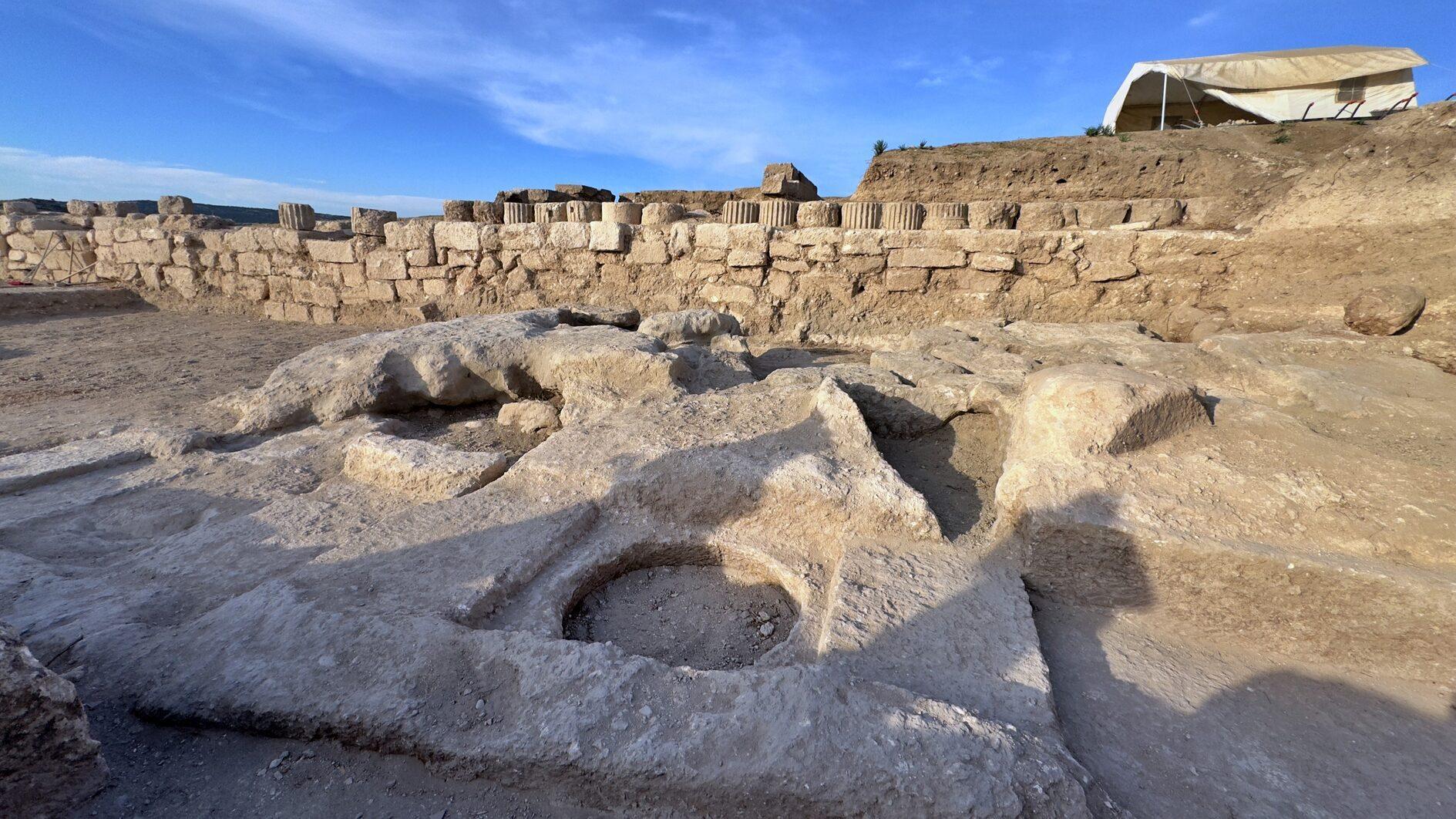Ancient sanctuary predating earlier finds uncovered at Kastabala
OSMANİYE

Excavations at the historic Kastabala Ancient City, located in southern Türkiye and often referred to as the “Ephesus of Çukurova,” have unearthed new findings, revealing even older cultural and religious relics than previously discovered.
The recent archaeological efforts, a collaboration between the Osmaniye Directorate of Culture and Tourism and Osmaniye Korkut Ata University, aim to restore and preserve the treasures of the 2,700-year-old Kastabala site.
The city, renowned for its colonnaded streets and rich historical legacy, has captured the interest of both national and international scholars.
In 2023, the discovery of a temple dating back to the Archaic Period (circa 540 BCE), believed to be dedicated to the goddess Kubaba, made headlines around the world. However, the ongoing 2024 excavations have revealed something even more remarkable: The remains of an open-air rock sanctuary and two ancient cisterns, suggesting a much older cultural heritage than previously thought.
Osmaniye’s Director of Culture and Tourism, Burhan Tosun, expressed his excitement about the discoveries. “Kastabala is a sacred city — its name itself conveys that significance. Under the ‘Heritage for the Future Project,’ we are working with the Culture and Tourism Ministry, along with the General Directorate of Cultural Heritage and Museums, to restore and preserve this site,” he said.
“Right next to the colonnaded street, we found evidence of a temple. Continuous findings confirm that this area served as a sacred hub in ancient times,” he added.
Tosun detailed that the team uncovered cisterns and intricately carved stones, which they believe were part of the religious rituals conducted at the site. “Alongside these features, the site boasts a theater, a church, a bathhouse and the views of Bodrum Castle in the background. Together, they paint a picture of a fully developed ancient city,” Tosun stated.
“While some structures date back to the 2nd century CE, the temple and sanctuary suggest the possibility of an even earlier timeline,” he said, inviting both local and international visitors to explore the site.
Unearthing deeper history
Associate Professor Faris Demir, the excavation director at Kastabala Ancient City, highlighted the global recognition the project has received. “The discoveries made here in 2023, particularly the Archaic Period temple dedicated to the goddess Kubaba, garnered extensive coverage in national and international media. It ranked as the third most significant archaeological find in Türkiye and the sixth in Europe that year,” Demir said.
“In 2024, as we continued excavations, we identified an open-air rock sanctuary adjacent to the Archaic temple. This sanctuary, which predates the temple, is an astonishing discovery. Within the sanctuary, we found a sculptural base — likely the seat for a sacred idol — and two cisterns.
Findings suggest that the area was later repurposed as a stone-cutting site," Demir added.
The carved stones from this location were then used to construct the Archaic temple, showcasing how the ancient inhabitants ingeniously utilized resources.
The findings at Kastabala continue to highlight the city’s importance as a cultural and religious hub in antiquity.
Beyond extending the timeline of the city, the identification of the rock sanctuary beneath the Archaic temple, offers insights into the evolution of religious practices in the region.
As the excavation progresses, researchers hope to uncover more details about the daily lives and beliefs of the people who lived in Kastabala centuries ago.
















